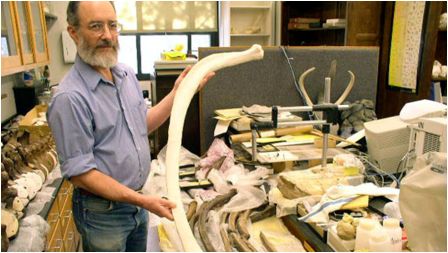August 8, 2024
Improving the Quality and Speed of Alloy Die Casting Products in the Auto Sector See the articleWe always knew that the Creaform products were versatile, but sometimes their application surprise and amaze even us!
The University of Michigan owns a Handyscan 3D, which is made available to its research staff for various projects. In their own words, “this method of scanning is perfect for not only capturing an object’s basic form but also the details of its surface, since the laser is often of very high accuracy”.
One such project is currently helping Dr. Dan Fisher, of the UM Museum of Paleontology, lead a team of students who are creating 3D models from the bones of a mastodon. These huge bones were discovered in 1998 by an Indiana peat farmer, during the normal course of his work.
The mastodon, affectionately named “Fred,” was male and very large, about 12 feet tall, and with 9 feet long tusks! Mastodon remains are not so unusual in that region, but Fred was a little special, because he was especially well-preserved and complete (about 90% of its fossilized remains have been excavated).
In 2006, Fred was donated to the Indiana State Museum. Now, thanks to new technology that weren’t available even at the turning of the century, the University of Michigan Paleontology Department can use 3D scanning and printing to further solve this ultimate puzzle.
The Handyscan 3D is used to scan the bones (femurs, tibias, tusks…), and then the FDM Z-510 3D printer helps “print” these shapes directly into plaster. The 3D model enables researchers to create a virtual skeleton that can easily be shared, while the perfectly identical plaster bones can be glued together and assembled into an actual skeleton.
You can check out this video put together by the University’s 3D Lab, showcasing how the Handyscan 3D works.








